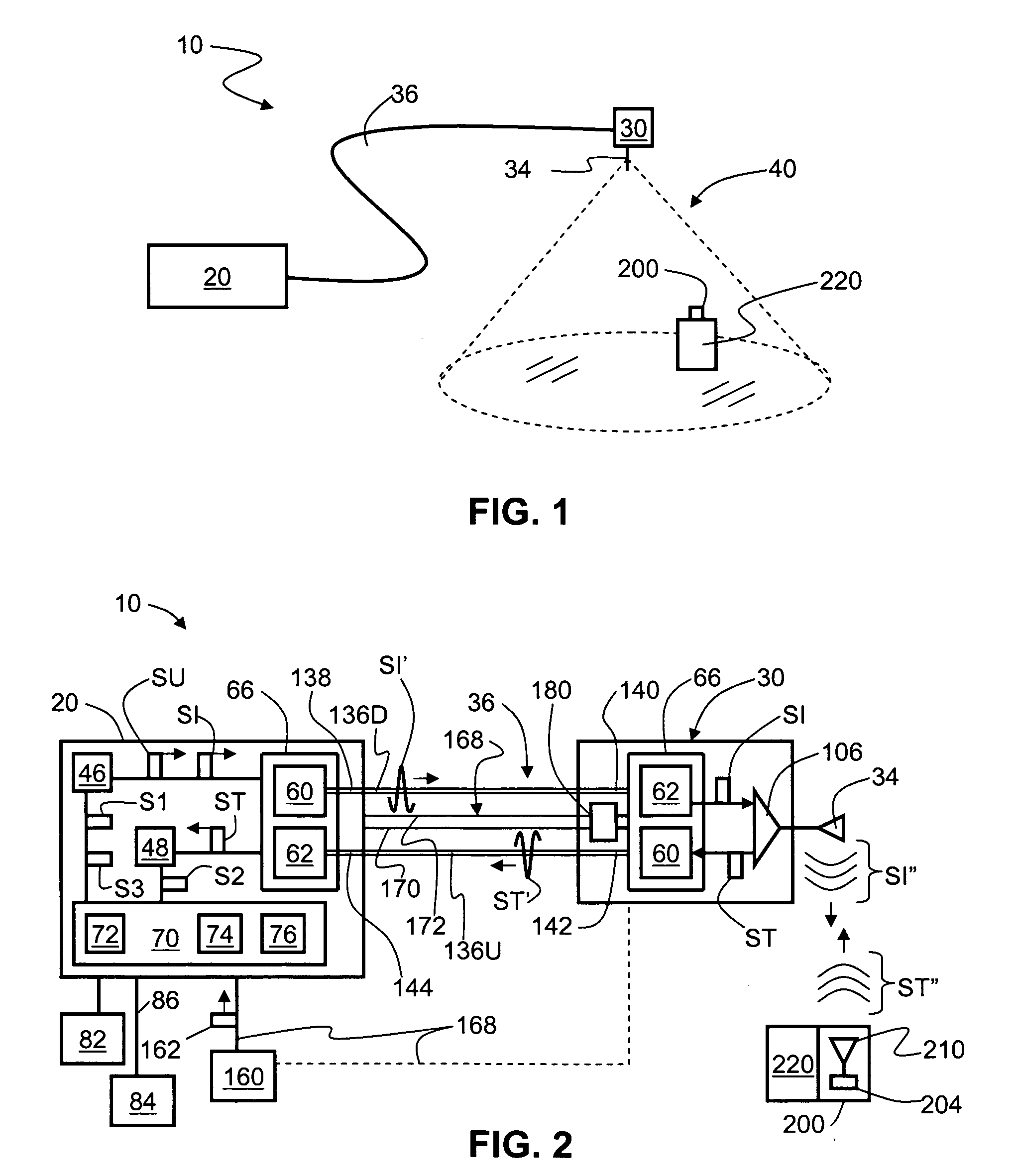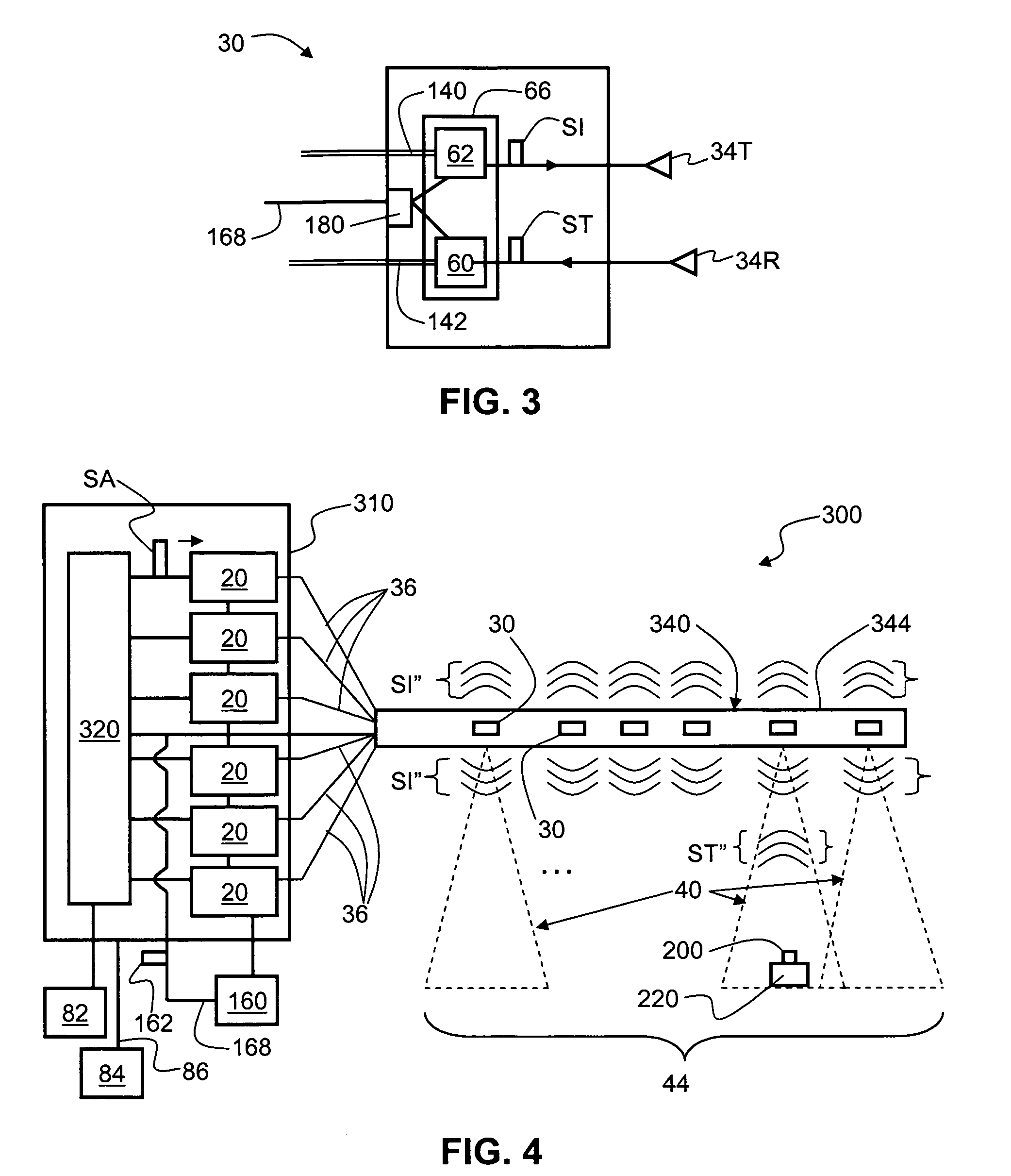Centralized optical-fiber-based RFID systems and methods
- Summary
- Abstract
- Description
- Claims
- Application Information
AI Technical Summary
Benefits of technology
Problems solved by technology
Method used
Image
Examples
Embodiment Construction
[0030]Reference is now made in detail to the present preferred embodiments of the invention, examples of which are illustrated in the accompanying drawings. Whenever possible, the same or analogous reference numbers are used throughout the drawings to refer to the same or like parts.
I. Basic Optical-Fiber-Based RFID System
[0031]FIG. 1 is a schematic diagram of a generalized embodiment of an optical-fiber-based RFID system 10 according to the present invention. System 10 includes a RFID reader unit (“RFID reader”) 20, a transponder unit (“transponder”) 30 that includes an antenna 34, and an optical fiber RF communication link 36 that optically couples the RFID reader to the transponder. As discussed below, RFID system 10 has picocell 40 substantially centered about antenna 34. The discussion below is assumes for the sake of illustration that antenna 34 is located in close proximity to the other components making up transponder 30 so that the location picocell 40 is said to correspond...
PUM
 Login to view more
Login to view more Abstract
Description
Claims
Application Information
 Login to view more
Login to view more - R&D Engineer
- R&D Manager
- IP Professional
- Industry Leading Data Capabilities
- Powerful AI technology
- Patent DNA Extraction
Browse by: Latest US Patents, China's latest patents, Technical Efficacy Thesaurus, Application Domain, Technology Topic.
© 2024 PatSnap. All rights reserved.Legal|Privacy policy|Modern Slavery Act Transparency Statement|Sitemap



